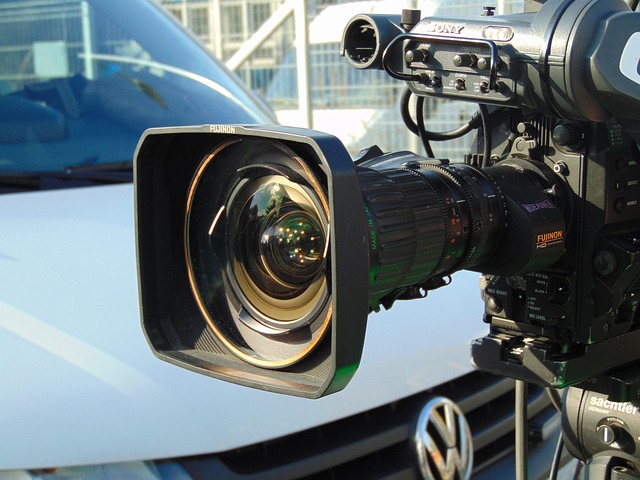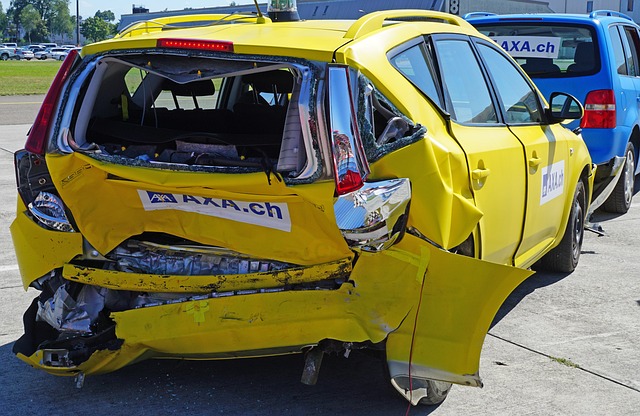Collision coverage, a critical component of auto insurance, provides financial protection for car owners in case of accidents, regardless of fault. It covers repair or replacement costs up to policy limits, offering peace of mind and shielding against significant financial burdens. Understanding collision types—from minor fender benders to severe crashes—is essential when choosing the right coverage. Insurance companies facilitate claims, ensuring a streamlined process for repairs or compensation. Collision coverage costs vary based on vehicle details, driving history, deductibles, and policy options. However, it has limitations, excluding situations where the policyholder is at fault and specific damage types. Maximizing benefits involves reviewing policies, understanding deductibles, and staying informed about rights and obligations.
Looking to protect your vehicle from unforeseen events? Collision coverage is an essential aspect of auto insurance that provides financial security in case of accidents. This comprehensive guide explores what collision coverage entails, from minor fender benders to major crashes, and how it facilitates the claims process. We delve into the factors influencing costs, common exclusions, and tips to maximize your benefits. Understanding these key elements ensures you’re adequately protected on the road.
Understanding Collision Coverage: What It Covers and When It's Necessary

Collision coverage is a crucial component of auto insurance that provides financial protection in the event of a car accident, regardless of fault. It covers damages to your vehicle when it collides with another object or vehicle. This includes repairs or even total replacement costs, up to the policy’s limits. Understanding what collision coverage entails is essential for any car owner as it offers peace of mind and safeguards against significant financial burdens resulting from accidents.
Having this coverage is particularly necessary when considering the potential expenses associated with car accidents. Even minor collisions can lead to substantial repairs, and without collision coverage, these costs could be borne entirely by the policyholder. Collision insurance is especially valuable for those who drive frequently or live in areas with high traffic density, where accidents are more prevalent. It ensures that drivers are protected against unexpected financial surprises following a crash.
Types of Collision Events: From Minor Fender Benders to Major Crashes

Collision events can range from minor fender benders to major crashes, each with its own level of impact and damage. A fender bender, for instance, typically involves light contact between two vehicles, resulting in dents or scratches on one or both cars. These incidents are common in parking lots or during low-speed traffic. On the other end of the spectrum, major crashes can involve high speeds, severe impacts, and potential rollovers. Such accidents often lead to significant vehicle damage, injuries, or even fatalities.
Understanding the types of collision events is crucial when considering collision coverage under an auto insurance policy. Collision Coverage helps protect against financial losses arising from these incidents, ensuring that repairs or replacements can be made without incurring substantial out-of-pocket expenses. It’s essential for all car owners to be aware of the potential risks and choose a policy that aligns with their needs, providing adequate coverage for any collision event they might encounter on the road.
The Role of Insurance Companies in Collision Claims Processing

When a collision occurs, insurance companies play a pivotal role in facilitating the claims process for all parties involved. Their expertise lies in evaluating damage, assessing liability, and providing financial compensation or repairs as per the terms of the policy. Collision coverage, a critical component of comprehensive car insurance, ensures that drivers are protected against unexpected costs arising from accidents.
These companies have dedicated teams equipped to handle collision claims efficiently. They communicate with policyholders, investigate incidents, and coordinate with repair shops or direct payment to claimants. By streamlining this process, insurance providers help reduce the stress and financial burden on individuals post-accident, promoting a smoother transition back to normalcy.
Factors Influencing Collision Coverage Costs and Policy Options

Several factors significantly influence the cost of collision coverage, which varies among insurance providers and policy types. One key factor is the make and model of your vehicle; newer cars or those considered high-end luxury vehicles often come with higher collision premiums due to potential repair costs. The driving history and age of the insured individual play a crucial role as well—a clean record and younger drivers tend to secure better rates.
Policy options also dictate collision coverage costs. Comprehensive versus collision only, deductibles, and coverage limits are essential considerations. Opting for higher deductibles can lower premiums, but it’s important to balance this with the frequency of potential claims. Additionally, choosing a policy with broader coverage might be more expensive, but it provides better financial protection in case of accidents involving other vehicles or objects.
Common Exclusions and Limitations in Collision Insurance Policies

Collision coverage is designed to protect policyholders from financial burdens resulting from car accidents, but it’s crucial to understand its limitations. While collision insurance typically covers damages to your vehicle and certain expenses related to an accident, there are several common exclusions and limitations. These may include situations where the policyholder is at fault for the accident, such as reckless driving or driving under the influence. Additionally, collision coverage usually does not extend to property damage or injuries caused by non-vehicle entities like animals or weather conditions.
Another limitation worth noting is the deductible amount, which is a predetermined sum that policyholders must pay out of pocket before the insurance kicks in. Even with comprehensive collision coverage, this deductible remains a financial burden. Moreover, some policies may have restrictions on the type and extent of repairs covered, especially if the vehicle’s damage is deemed total or beyond economic repair. Policyholders should carefully review these exclusions and limitations to ensure their specific needs are addressed adequately.
Tips for Maximizing Your Collision Coverage Benefits

Maximizing your collision coverage benefits requires a strategic approach. Firstly, review your policy details carefully to understand what’s covered and any exclusions. Collision coverage typically kicks in when your car sustains damage due to a collision with another vehicle or object, but specific circumstances might vary. Ensure you have comprehensive understanding of deductibles; these are the amounts you’ll pay out-of-pocket before insurance steps in. Adjusting these according to your financial comfort can optimize benefits without significantly impacting premiums.
Additionally, stay informed about your rights and obligations. Know the process for filing a claim, including gathering evidence like photos and reports. Regularly updating your policy with changes in vehicle value or usage can also ensure adequate coverage. Remember, collision coverage is designed to protect you financially during unexpected events; making informed choices can help make this protection more effective.
